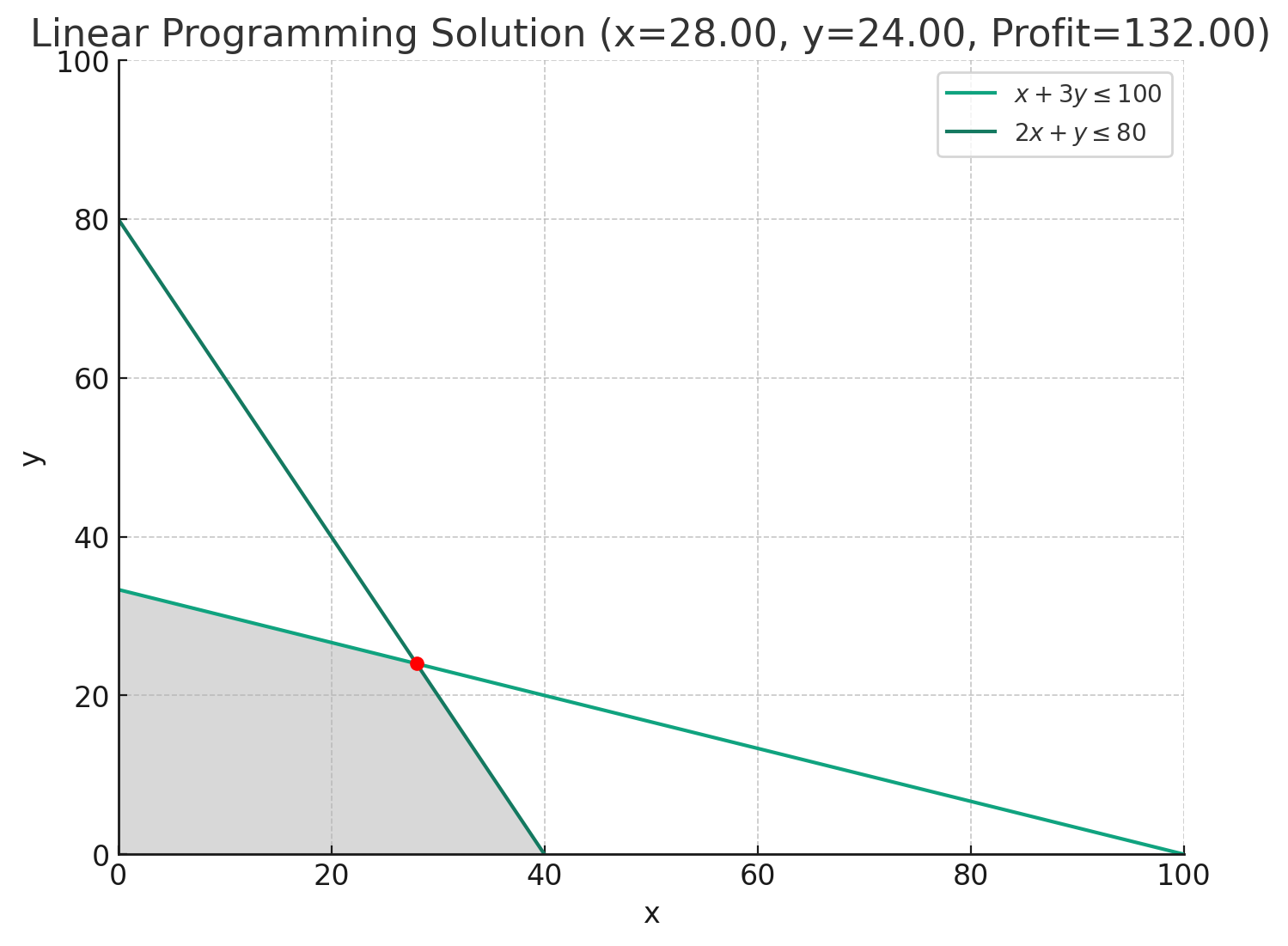baumhaus.digital/Design & Computation/Perspectives in Engineering/IOPS/Constraints/Linear Programming
Linear Programming (LP) is a mathematical method used to find the best outcome in a model whose requirements are represented by linear relationships. It's like playing a game where you need to achieve the highest score (maximize) or the lowest score (minimize) under certain rules. These rules are your constraints, like how much money you can spend or how many hours you have. The score you're trying to optimize is called the objective function, and it's also a linear equation. LP helps you figure out the best way to play this game, balancing all the rules, to achieve your goal, whether it's making the most profit, using the least resources, or something similar. It's a powerful tool for decision-making in business, engineering, economics, and more.

5 Axones
-

- with fulltext /data/1125.Andreas_Fossile.pdf
-

[Impressum, Datenschutz, Login] Other subprojects of wizzion.com linkring:
teacher.solar
fibel.digital
naadam.info
udk.ai
refused.science
puerto.life
gardens.digital
kyberia.de
giver.eu
baumhaus.digital